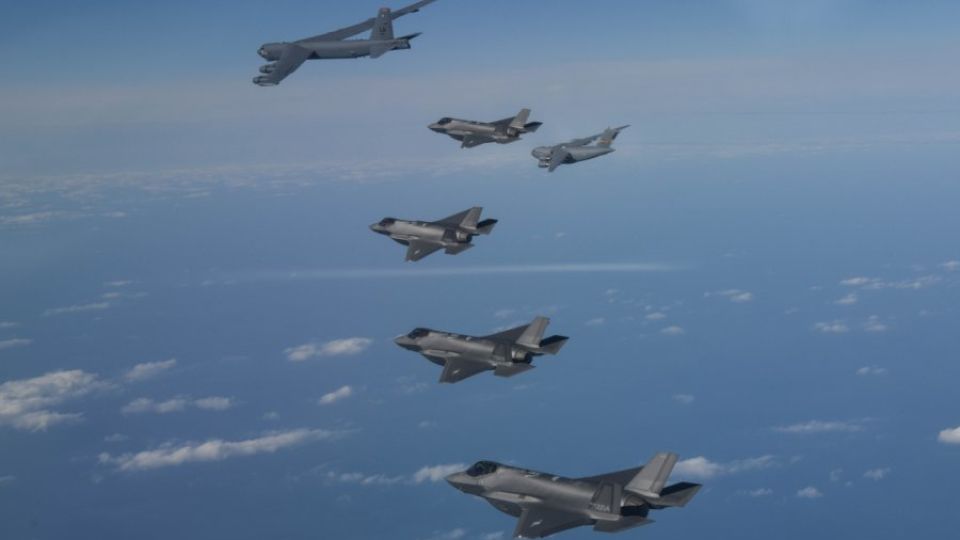December 21, 2022
SEOUL – South Korea and the US on Tuesday staged combined air drills involving the Korean F-35A and F-15K fighters as well as the US B-52 bombers and F-22 fighters, the first time such an alliance of warplanes tested their readiness, in a clear response to North Korea’s increasingly hawkish rhetoric amid its uninterrupted missile tests.
Hours ahead of the exercises, the North warned that it would take real steps to strongly disapprove of Japan’s turnaround last week from post-World War II pacifism to adopt what Tokyo calls “counterstrike capabilities” against attacks that have already taken place or are imminent. Pyongyang also tested what Seoul said were ballistic missiles on Sunday, pushing up its missile tally, which is already at a record for this year.
“The joint drills enhanced interoperability of Korean and US weapons and our capability to run a joint operation, using America’s extended deterrence,” South Korea’s Defense Ministry said, referring to US support involving its nuclear umbrella and strategic assets like bombers and fighters — all meant to prevent aggression with superior firepower.
Tuesday’s decision to fly the US bombers and fighter jets, southwest of Jeju Island, is part of the allies’ push to follow through on what their defense chiefs agreed last month at their annual security gathering, where they shook hands on “timely” deploying American strategic assets, according to the ministry. South Korea’s Air Force said the two countries will maintain their readiness through air drills, set to run throughout this week.
The drills came as Washington seeks to contain not only an increasingly belligerent North Korea but an emboldened China, a country the US wants to put in check by rallying its allies like Japan.
The “major transformation of Japan’s security policy” — according to Japanese Prime Minister Fumio Kishida, who also revealed last week plans to double military spending for the next decade to largely contain China — is emblematic of Washington’s rush to reclaiming the supremacy that most of the time contained Beijing from influencing the way economic exchanges and diplomacy had taken place in the region. North Korea, whose biggest ally is China, has repeatedly criticized the “US unilateralism.”
“This so-called counterattack has nothing to do with self-defense; this is more like a preemptive strike,” a spokesperson for Pyongyang’s Foreign Ministry said in a statement Tuesday released by the North’s state-run Korean Central News Agency. “The new aggression policy fundamentally reshapes the security landscape in East Asia.”
The spokesperson blasted the US, accusing it of propping up Japan’s military buildup reminiscent of its wartime aggression. The US has publicly welcomed a stronger Japan, saying its changing security posture would help promote peace and a rules-based order in the Indo-Pacific region — a term the US uses to describe a larger Asia including India, another partner in its anti-China coalition.
North Korea lashed out at its southern neighbor as well.
In a separate statement released the same day, Kim Yo-jong, the powerful sister of leader Kim Jong-un, dismissed misgivings about its Sunday launch. Pyongyang said the launch was conducted to test its spy satellite, which many analysts here called “rudimentary” given the poor resolution of the satellite images showing parts of Seoul. South Korea says the launch did not involve space rockets but ballistic missiles, which United Nations Security Council resolutions ban North Korea from building.
But more international sanctions would hardly stop the regime from pursuing a new reconnaissance satellite, according to Pyongyang, which said the task was a priority in its self-defense.
Kim Yo-jong warned that the isolated country would soon test its intercontinental ballistic missile, a weapon the North last revealed in November but is believed to lack the key technology called a “reentry vehicle” — critical for any ICBMs to successfully deliver nuclear warheads aboard.
“We will soon show you,” Kim said.


